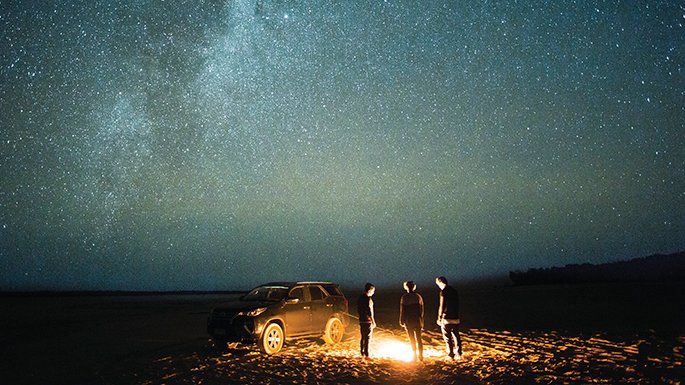
Queensland is like a gigantic magnet. It’s an irresistible place that keeps pulling you back into its force field. Of course, the first time you visit, you’re likely to head straight for the Gold Coast, south of Brisbane, with its 57km of pristine beaches and the natural wonders of the Gold Coast Hinterland; or the Sunshine Coast, north of Brisbane, with its equally splendid beaches and the remarkable volcanic formations of the Glass House Mountains.
But when you come back for a longer stay – as you surely will – what should you see then?
The first thing you should know is that there is never a bad time to visit. There are regional and seasonal variations in climate – for instance, Tropical North Queensland is hotter and more humid, and there is a rainy season between November and March which makes the vegetation delightfully lush – but it’s warm enough to swim at any of the beaches along the 7,400km of coastline at any time of year.
Secondly, don’t ignore Brisbane. It’s too often overlooked in the rush to get to other hotspots. The capital city is in the midst of a huge regeneration, with new luxury and boutique hotels, a thriving foodie scene, and more and more activity on and along the river that winds through its heart. You’ll want to spend a few days here, at least – see “Why a stop in Brisbane is a must” for more.

Third, hire a car. It’s the best and most satisfying way to see the country (you’ll be pleased to know Aussies drive on the left, too). Starting from Brisbane or the Gold Coast, travel north, up the Bruce Highway, which hugs the east coast all the way to Cairns. Take your time: there are dozens of places to stop and unwind.
One essential stop is the Fraser Coast. The World Heritage site of Fraser Island, which stretches from Inskip Point to Hervey Bay, is the largest sand island in the world, and the only one on which a rainforest grows – to walk in the shade of tall trees growing right out of the sand seems nothing less than a miracle. Make sure to swim in Lake McKenzie, a rainwater lake of startling clarity that changes with the sun through vivid blues and greens, surrounded by pure, white silica sands. You can take day trips to the island, otherwise you’ll need a four-wheel-drive vehicle to get around.

Once back on your road trip north, when you get to Rockhampton, you have a choice. You can continue to drive north, or you can turn west and just keep going – way, way out west. When you get to Winton, you’re really in the outback. Legend has it that a stampede of dinosaurs near here, preserved in fossilised footprints, was the inspiration for a scene in Steven Spielberg’s film Jurassic Park.
If you carry on north, you’ll pass through endless canefields and tropical savannah woodlands, and you’ll notice it getting steadily warmer. There are better known stops as you go – Airlie Beach and the Whitsunday Islands, which demand a week if you missed them the first time – and by the time you pass Townsville, you’re officially in Tropical North Queensland.
The far north presents its own sea of possibilities. You can explore the islands and reef off the coast or, if you want to cool off a little, head for the hills of the Atherton Tablelands. Once, the townships here were logging mills. Today, some of the oldest and most biodiverse rainforests on earth are fully protected, home to cassowaries and tree kangaroos.

And if you’ve really got an appetite for adventure, and have a four-wheel-drive vehicle, you can continue further north, all the way up Cape York Peninsula, an incredible wilderness that has to be experienced to be believed. (One warning: you absolutely can’t swim in the rivers and creeks up here; there be crocodiles!)
This kind of journey will give you more than just a taste of Queensland. It’s a big, beautiful place with a full array of flavours. Of course, there are many more ways to get around, and accommodation to suit any budget. All you need is the time to dive deeper into its garden of earthly delights.
source